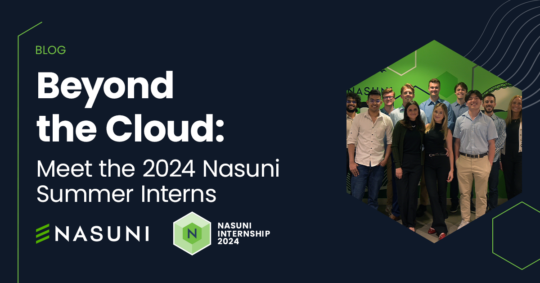Our latest insights
The Nasuni blog
Learn about the latest insights, trends, and data infrastructure discussions on our blog.


Beyond the Cloud: Meet the 2024 Nasuni Summer Interns
Blog | July 24, 2024
Nasuni’s Summer Internship program gives students the opportunity to learn about our innovative enterprise hybrid cloud platform while gaining…
Read more
Blog | July 24, 2024
Beyond the Cloud: Meet the 2024 Nasuni Summer Interns
Nasuni’s Summer Internship program gives students the opportunity to learn about our innovative enterprise hybrid cloud platform while gaining…
Read more
Blog | July 22, 2024
The Era of Hybrid Cloud Storage: The Battle to Heighten Data Security
Learn how you can heighten your data security strategy in Nasuni’s new industry report: “The Era of Hybrid Cloud Storage.”
Read more
Blog | July 17, 2024
How To Solve AI’s ROI Problem
Russ Kennedy explains why companies need to focus on soft ROI for initial AI business tools and projects, versus hard ROI benefits.
Read more
Blog | July 16, 2024
The Era of Hybrid Cloud Storage: Modernizing Global Data Infrastructure
Learn how you can modernize your global data infrastructure in Nasuni’s new industry report: “The Era of Hybrid Cloud Storage.”
Read more
Blog | July 11, 2024
The Thinning of the Data Center in the Hybrid Cloud Era
Andres Rodriguez shares how the grip that data centers had on enterprises has weakened as IT leaders migrated to hybrid cloud solutions.
Read more
Blog | July 09, 2024
Planning for the Future: Nasuni Joins the Vista Equity Partners Family
Nasuni CEO Paul Flanagan discusses why Nasuni and Vista Equity signed a strategic growth investment agreement, solidifying its unicorn status.
Read more